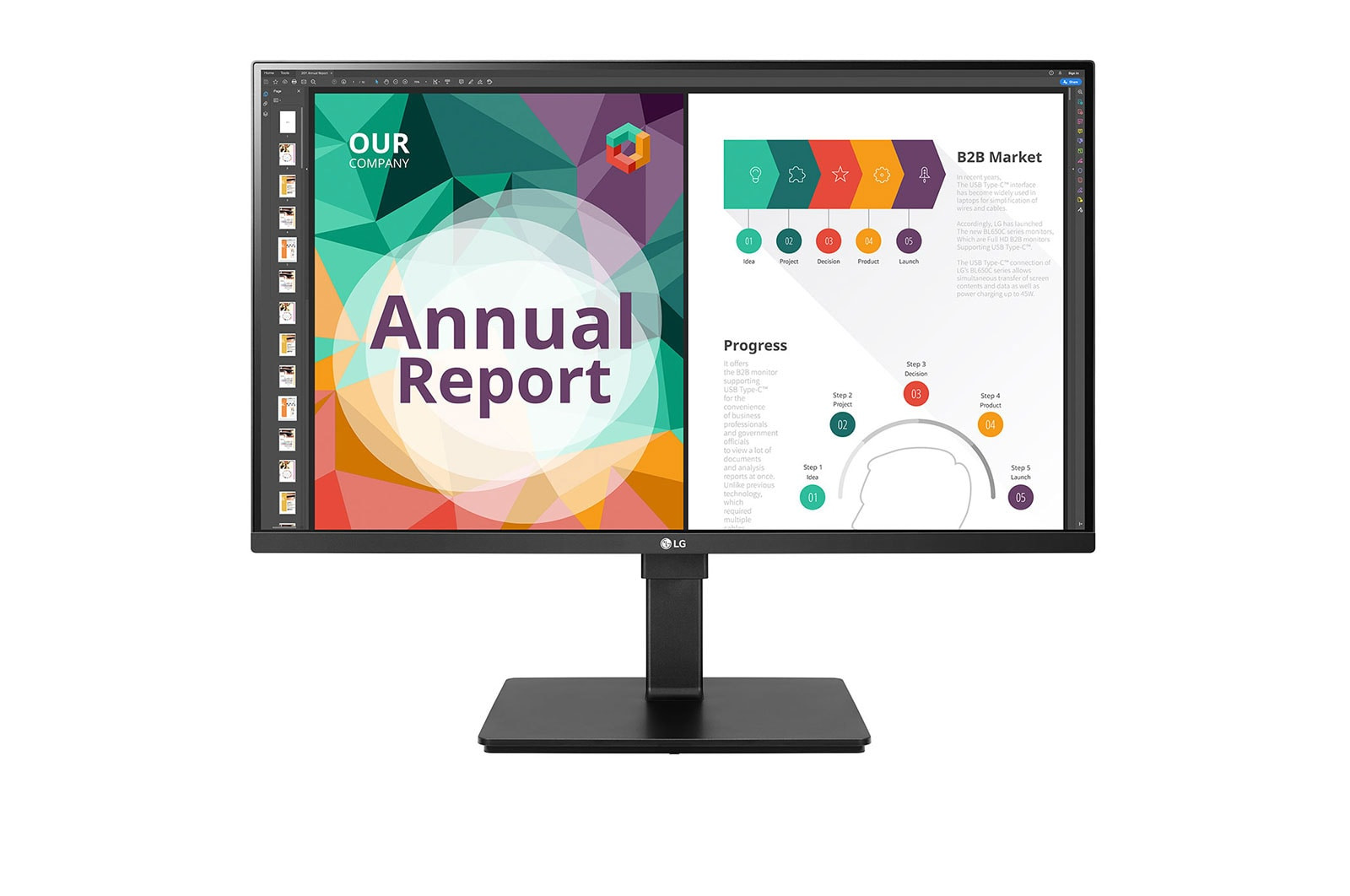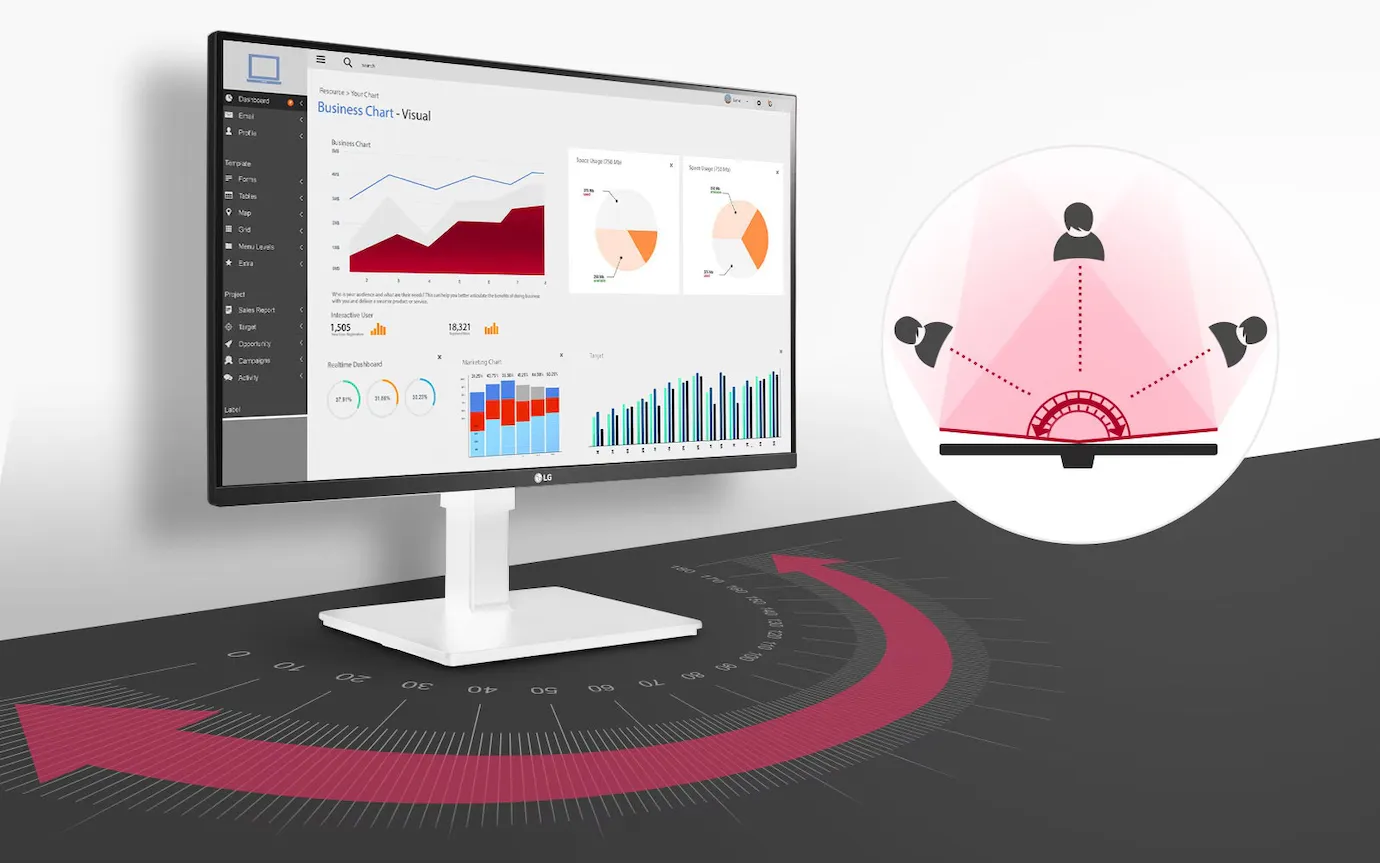































£545.90*
- Resolution 3840 x 2160 4K UHD
- Diagonal 32"
- Panel type IPS
- Refresh Rate 60Hz



Product information
The LG 32BN67UP-B is more than just a monitor - it offers an unrivalled viewing experience for creatives and office professionals alike. With its 31.5-inch UHD 4K display and IPS technology, it brings your work to life with impressive sharpness and colour accuracy. Thanks to its numerous functions, this monitor is the ideal choice for anyone who needs maximum precision and comfort in the workplace.
Experience the following technical highlights:
- Display size: 31.5 inch
- Resolution: UHD 4K (3.840 x 2,160)
- Panel type: IPS display
- Colour space: DCI-P3 95 % (Typ.)
- HDR support: HDR10
- Connections: DisplayPort, HDMI, USB 3.0, headphone output
- Ergonomic design: Height-adjustable, tiltable, rotatable and swivelling
- Speakers: Integrated stereo speakers
- Flicker safe and reading mode for eye protection
Outstanding picture quality with UHD 4K IPS display
The UHD 4K IPS display of the LG 32BN67UP-B offers aresolution of 3.840 x 2,160 pixels, it offers four times the clarity of conventional Full HD. This thrillingly sharp display is supported by IPS technology, which ensures outstanding colour fidelity and a consistent image from every viewing angle. These features are a real advantage, especially when viewing content together or for creative image editing.

Eye-friendly working with Flicker Safe and reading mode
The LG 32BN67UP-B is not only powerful, but also easy on the eyes. Thanks to Flicker Safe technology, flickering is reduced to almost zero, which minimises visual fatigue. The reading mode reduces blue light for even better visual comfort, especially during long working hours.
Perfect colours thanks to HDR10 and DCI-P3 95%
With a colour space coverage of 95% of the DCI-P3 standard and HDR10 technology the monitor impresses with precise and vivid colours. This makes it possible to display demanding content such as videos and photos with an exceptional level of detail. Colours are reproduced exactly as intended by the content creator - ideal for creative work where the highest level of colour accuracy is required.
Multiple connections for maximum flexibility
With HDMI, DisplayPort and USB 3.0, the LG 32BN67UP-B offers a variety of connections to connect your devices quickly and easily. In particular, the USB 3.0 interfaces enable fast data transfers and significantly expand connectivity.
Ergonomic design and integrated speakers
The 3-sided borderless design and ergonomic one-click stand make this monitor not only a visual highlight, but also an efficient work solution. Thanks to the height, tilt, swivel and swivel adjustment, the monitor can be perfectly adapted to any working environment. The integrated speakers also help to avoid cable clutter and keep the workplace tidy.
The LG 32BN67UP-B is the perfect choice for anyone looking for a powerful, colour-accurate and ergonomic monitor. Ideal for creative professionals who value the highest image quality and comfort in the workplace.
Technical data
| Name | LG 32BN67UP-B 32" IPS Monitor, 3840 x 2160 4K UHD, 60Hz, 5ms |
|---|---|
| Article number | 1000033185 |
| GTIN/EAN | 8806087975444 |
| Manufacturer SKU | 32BN67UP-B |
| EPREL ID | 1430242 |
| Model name | 32BN67UP-B |
| Brand | LG |
| Product Type | Monitor |
| Product Series | LG Business Series |
| Panel type | IPS |
| Resolution | 3840 x 2160 4K UHD |
| Diagonal | 32" |
| Aspect Ratio | 16:9 |
| Viewing angle - Horizontal | 178° |
| Viewing angle - Vertical | 178° |
| Contrast Ratio | 1,000 :1 |
| Max. Brightness | 350 cd/m² |
| Response time | 5ms |
| Refresh Rate | 60Hz |
| Support - VESA | 100 x 100 |
| Inputs | 1x Displayport , 1x USB-A , 2x HDMI |
| Outputs | 1x 3,5mm Jack |
| Product width | 71.43 cm |
| Product height | 42.01 cm |
| Product depth | 4.57 cm |
| Weight | 8.2 kg |
| Colour | Black |
| EEK Spectrum | A to G |
| Energy efficency class | G |
| Condition | New |
| Warranty | 36 Month |
| Warranty type | Swap service Service and support information |
Product safety
| Person responsible for the EU |
|---|
| LG Electronics Deutschland GmbH |
| Alfred-Herrhausen-Allee 3-5 |
| 65760 Eschborn |
| Germany |
| info@lge.de |



